Vikings and runestones (part of 2)
Sec vezhi with shoulders,
A wound stag
Lil red crying.
And became rydyany
From steel to ice
Drunken armor
Fun abusive.
(Egil, son of Grima Lysy. "Redemption of the head." Translation by S.V. Petrov)
Along with the spread of the tradition of installing runestones in Scandinavia, so-called pictorial or “picture” stones also became popular at the same time. Some of the researchers date the time of their appearance I-II century AD. and note that the ancestral home of this tradition is the island of Gotland and the south-eastern region of Sweden. This is due to the fact that already in the era of the early Iron Age, Gotland was a sacred place, where numerous necropolises and more than 400 cairns (cult stone mounds) were found, while in Kauparva under one of them even a stone tower of a conical shape of the Bronze Age was found, also served for burial. In the Middle Ages, the inhabitants of the island of Gotland for a long time were politically independent and retained their distinctive culture and mythology, which were quite different from both Swedish and Scandinavian. The main source of information on mythology and stories The island is "Gutasaga" - a code of contracts concluded between the islanders and Sweden, and also includes an essay on the history of the island, including legends about its occurrence in pre-Christian times.
Photo 1924 of the year. The boys sit on a rock with pictures of the Bronze Age (ca. 1800-500 years. BC. E.).
Many stones from Gotland are very informative. For example, on one of the VIII century stones. a phallic form in its upper part depicts an equestrian warrior in a helmet with a barmitsa and with a large round shield with a spiral-shaped ornament. The stepmen are not visible, although, judging by the position of the legs, they should be, but on the rider the wide trousers are clearly visible, downright "sprawling Cossack". That, of course, opens up a wide field of activity for lovers of "folk history."
Photo 1933 of the year. Stone from the island of Gotland. On it we see fighting horsemen, ships sailing on the sea and hunting scenes.
These drawing stones usually look like flat plates, installed vertically, and they are called both mushroom-shaped and phallic or anthropomorphic in shape. In accordance with the first version, she could symbolize the hope for the revival of the deceased in a new body, while, according to those who consider it anthropomorphic, such stones were the seat of his soul. Moreover, steles such as these Scandinavian were widely distributed throughout Western Europe and also to the south - in the Mediterranean. The main motive of such steles of the II-VII centuries is boats, or ships crossing the waters of death. Later steles began to include images of waterfowl, wild animals and various monsters. A popular motif, clearly borrowed from the “Younger Edda”, was the motive of the mask that Loki put on to become a giantess. It is believed that this could be a boundary poles. However, the most reasonable version is still the opinion of the memorial purpose of these stones.
Scientists paint pictures of picturesque stone.
Around 800, the tradition of drawing stones is combined with runic: now stones can contain both texts and drawings, often of an ornamental nature. Both traditions are widely spread in Southern Scandinavia. At the same time, the images on the stones themselves undergo changes. So, instead of boats with a coffin, images of sailing ships (drakkar) appeared along with the crew. The stones themselves begin to hew in the form of slabs, which they have not usually done before.
The stones of this period began to resemble Celtic and Pictish stone sculptures, which was manifested, for example, in the distribution of such ornamental motifs as "braided" or "Irish knot". However, it should be noted that the writing of the Picts was hieroglyphic, while the runic writing of the Scandinavians was an alphabet.
That is, it can be said that although a certain commonality between Celtic, Pictish and Scandinavian pictorial traditions existed, having basically the art of megalithic time - the temples of Malta, ornamented dolmens of the Iberian Peninsula, and the menhirs of Brittany and Britain - the fine arts developed in each region quite independently, and the similarity in traditions was not based on direct borrowing, but was the result of similar development processes.
Rune stone from Ardre (Gotland, Sweden). Upstairs is the arrival of the deceased warrior on Odin Sleipnir's horse on Valhalla. The lower part of the stone is an illustration of the legend of the blacksmith Velund, who was captured by King Nidud. (State Historical Museum, Stockholm)
As for Scandinavia, here the tradition to install runic stones was maintained until the middle of the XII century. And then the runes were saved only among the Scandinavian peasants, being an alternative to the official Latin alphabet. The most recent monuments are carved runic calendars belonging to the XVIII - XIX centuries. In them, by the way, one can see a synthesis of Christian and pagan traditions. In Denmark, Futarok was used up to 1400, and with its help, texts were recorded not only in the middle language, but even in Latin.
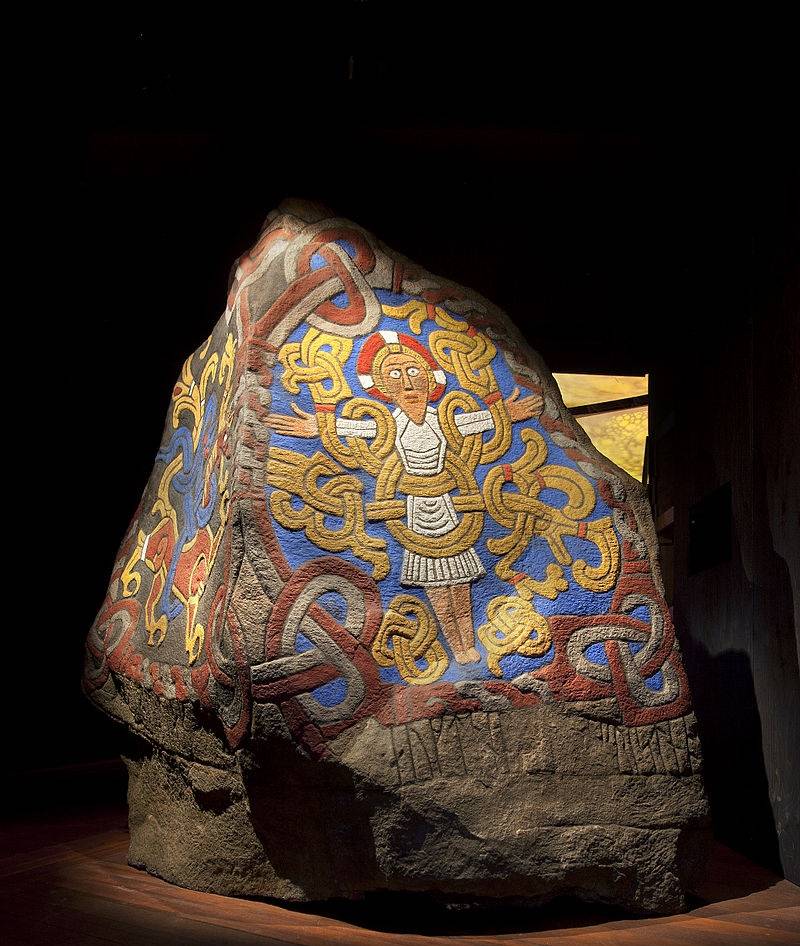
“Painted Stone” (National Museum of Denmark, Copenhagen)
Today, runestones are subject to serious study, although it is difficult, as noted in the first part of this material, a number of circumstances. Many stones, by virtue of their fame, even received their own names. However, in spite of all their “fame”, their perusal under the hour is rather hypothetical.
For example, the oldest runestone - Külver - which dates from about 400 for the year along the accompanying inventory of the burials of the cemetery where it was found, although there is no reason to think that it was not cut out either earlier or later than that time found burials. The inscription on it consists of a simple listing of all 24 runes futarka, and ends with the sign "Christmas trees", which is considered to be the form of the rune "t". So how to decipher it? According to one version, such an inscription was made to protect now living people from the dead, on the other - on the contrary, to help in communication between ancestors and their descendants. Maybe the writing of the runes was preceded by a certain ritual, which was called “the strengthening of the stone with runes”. In this case, listing all the runes could, for example, mean that the rune carver in this way enlisted the support of all the gods.
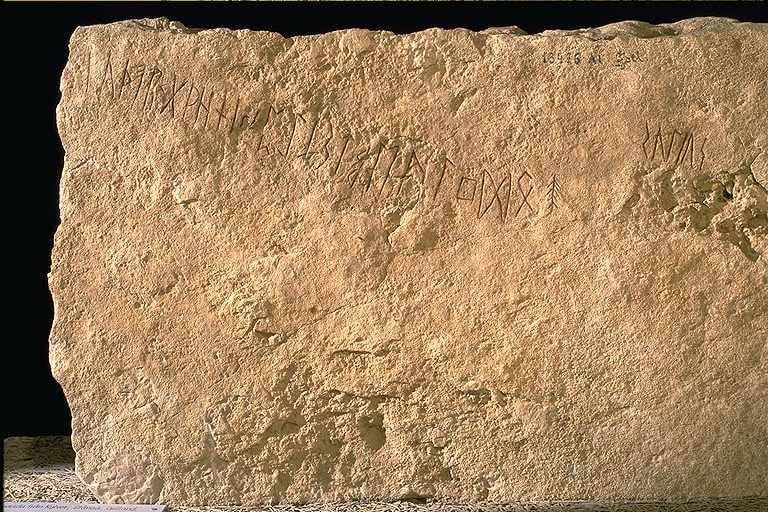
"Külver Stone". A photo of a stone from the Kulturmiljöbil Swedish Council for the Preservation of National Treasures image database. (State Historical Museum in Stockholm).
According to the third version, the inscription was made on a completely ordinary occasion, for example, the purpose of teaching children to runes, and at the cemetery this stone turned out to be random.
Stura Hammara stone in the form of a phallus.
The stone from Thun in Norway, dating from the end of the 4th century, is a clear example of how difficult it is to translate runic texts. In the twentieth century, the inscription on it was read by three researchers, after which four versions of the text came out at once, which were quite different in meaning from one another.
So, at the turn of the XIX - XX centuries Sophus Bugge read the inscription made on it as follows: “I, Viv, cut out these runes for my partner Vaurida. And put this stone. The three daughters divided the inheritance [because] they were the closest relatives. ” It seems to be all logical and understandable, is not it?
But in 1930, Karl Marstrandder made his own translation: “I, Viv, made a stone tomb for Vauridd, the bread-bearer (of my patron). My daughters, who also served as Vodurid, wished me to put this stone, since he had no close relatives and heirs. ”
Ottar Grönvik (1981 year) proposed another option: “I, Vivaz, put this stone for my Mr. Voduridaz. For me, Voduridaz, three daughters, the most prominent of the heirs, made this stone. ”
In 1998, Grönvik decided to revise the previous version of his reading and published the following text: “I, Viv, after [the death of] Vaurida, who fed me with bread, carved the runes on this stone for him. Three daughters at the funeral received beautiful husbands and they will have beautiful heirs. ”
All these options have caused a lively discussion. It mainly concerned the following question: could the women mentioned in the text inherit property from Vauridom? Is it possible that, after the death of his master, the successful major dwarf Viv received not only his movable property, but also had to take care of Vauridid's daughters and marry them?
Runic inscription, mid-XI century., Ed, Kirksti-gan, Uppland. It is a memorable inscription of a certain Swede who served in the Varangian Guard in Byzantium. It reads: "Rongvald cut out these runes: in Greece he was the commander of the fighters."
But the runic inscription made on the memorial stone from Utergard, in Uppland (Sweden), is enclosed in the body of the Midgard serpent. The texts inscribed in it in runes speak of three trips to England at the beginning of the eleventh century. some Ulf. The inscription reads: “Karei and Gerbjern set a stone in memory of Ulf, their father. God and the Mother of God, save his soul. Ulf received Danegeld three times in England. The first was paid by Tosti, the second by Torkel the High, then the Whip paid. ” When Tosti paid, we don’t know, but Torkel and Knut paid Danegd, that is, the ransom, respectively in 1012 and 1016. That is, the stone was put not earlier than this time, and besides, it was obviously put by Christians.
Stone from Utergaard.
The Einang stone (IV century) was found in the necropolis Gardberg, which served for burial from the Neolithic times. There were found both the burial mounds and cairns, that is, stone mounds. The inscription on the Einang stone is primarily interesting in that it contains the oldest mention of the word "runes". The text can be read as “I, the [...] guest cut out these runes”. It is believed that this stone was a tombstone, but it is possible that this is a person who visited this necropolis so that the souls of the dead could help him in solving some important problem, because even the supreme god Odin asked for the help of the souls of the dead.
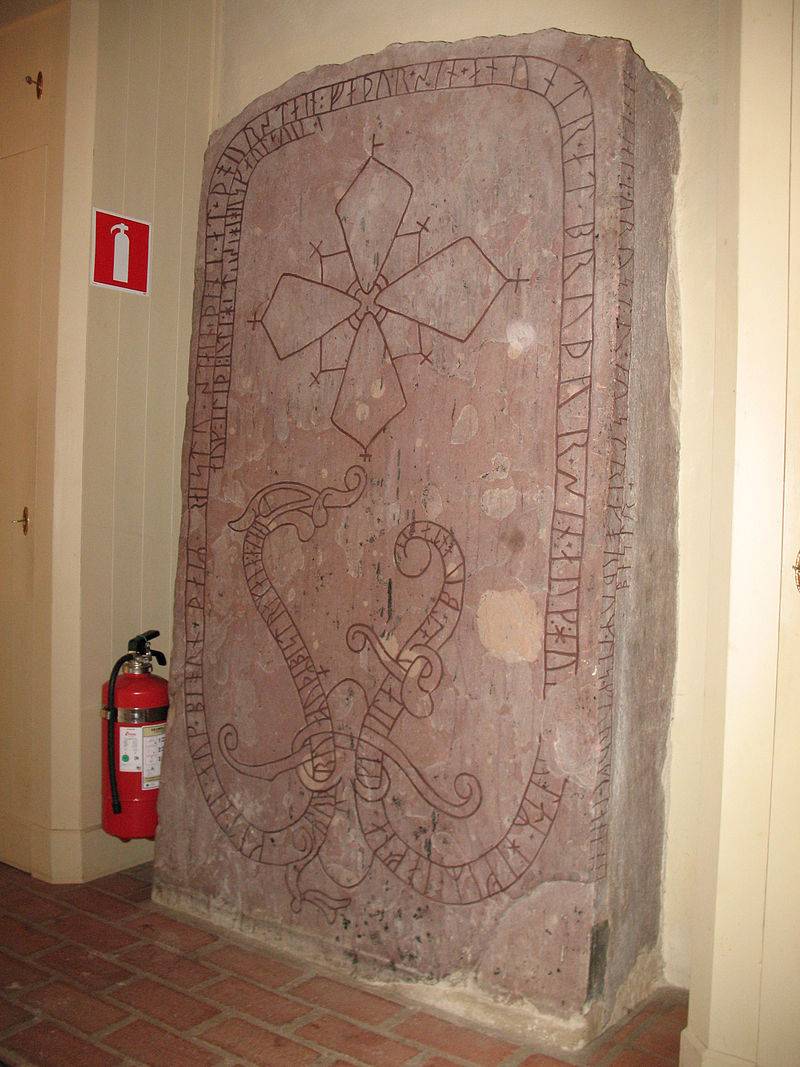
Stone in memory of the Viking, who fell "in the east in Garda", that is, in Gardariki. (Church of Turinde, municipality of Nukvarn, Sweden)
The stone from Tjangvide, set in memory of Kjёрrluf, is interesting for its images reflecting the pagan views of the Scandinavians. On the lower part of the stone, the Vikings are depicted on the ship, which suggests that Kjörluf was killed in the march, and this stone was his tombstone. In the upper right is a horseman and a woman with a horn in her hands. The rider also holds a cup in his hand, so it may be that this scene depicts a Valkyrie meeting Hörluf on Valhalla. According to another version, Kjörluf died on the hunt, and therefore there is a hunting scene on the stone. According to the third version, this image is an illustration of the Völsung saga: the rider is Sigurd, who defeated Fafnir, and he is met by Grimhild, with a horn full of witchcraft.
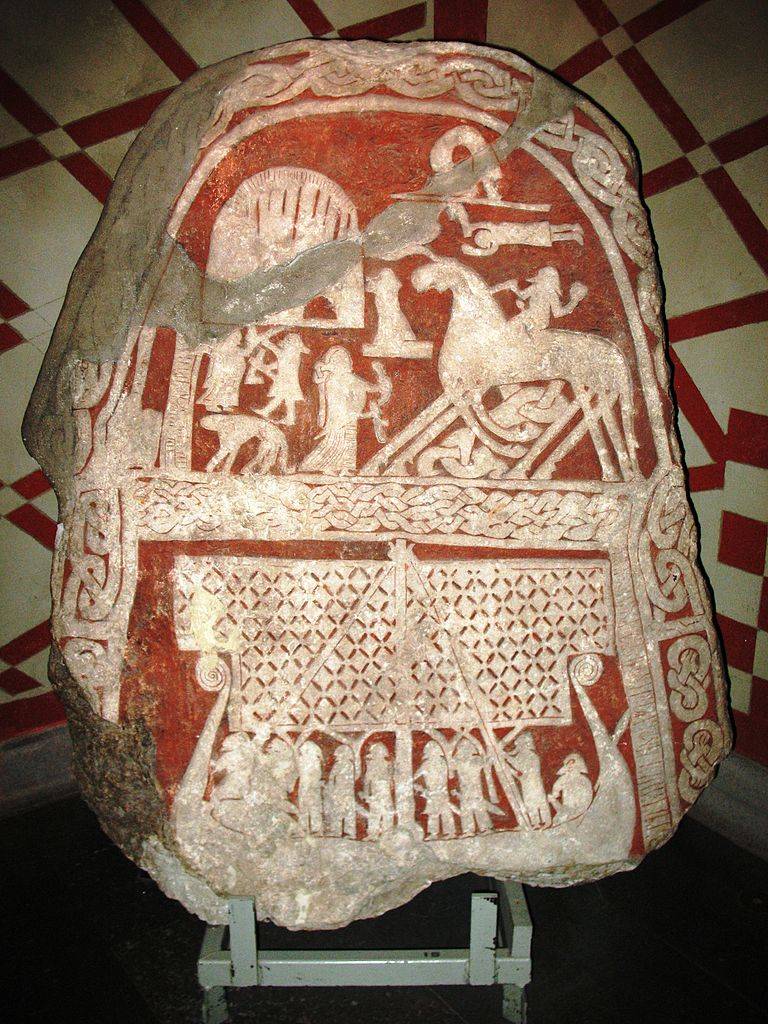
Stone, set in honor of Kjёрrluf from Tingvide (VIII-IX century)
The proof of the Vikings' stay in Eastern Europe is Pilgards Stone (IX century), set in honor of four brothers who died while crossing the Aifur threshold. Aifur is the Neñasytetsky threshold on the Dnieper, which is so named in the treatise “On Empire Management” by the Byzantine emperor Constantine Bagorogennogo, where the names of the Dnieper rapids are given including in Slavonic. Pilgards stone with an inscription about the death on Aifur is a confirmation that these names of rapids were used by the Vikings.
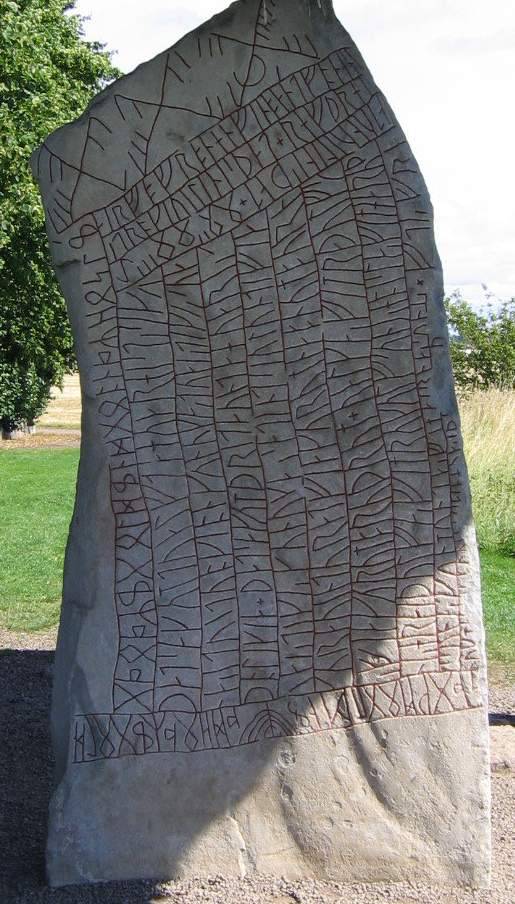
The famous stone of Ryok with the longest inscription for today, consisting of 762 runes.
But the original place where the stone from Ryok was located is unknown today, but it can be assumed that he could stand not far from his present place near the church of Ryoka parish in Edeskhog, Lena Estergötland commune. The inscription on the stone allows you to date it in the first half of the IX century. The stone is covered with runes from all sides, and even from above. All inscriptions are made with the help of the so-called "junior runes".
While reading and interpreting the individual runes of the stone from Ryok, the scientists showed a rare unanimity, but the meaning of the text is still unsolved. Again, no one doubts that this memorial stone, as indicated by the beginning of the text: “These runes speak of Wemud. Varin laid them in honor of the fallen son. " But what is said next is difficult to say, although all the words seem to be understandable:
Say, memory, what production was two,
which was twelve times on the battlefield,
and both were taken together, from person to person.
Tell me more, who is in nine tribes
lost his life with the Ostrogoths
and still all first in battle.
Theodric rules
brave in battle
helmsman warriors
ready at sea.
Now he sits,
holding your shield
on the gothic horse
leader of the meringov.
It is possible that the name of the Ostrogoth Theodoric the Great is named after Theodrick. But this is all that can be based on this!
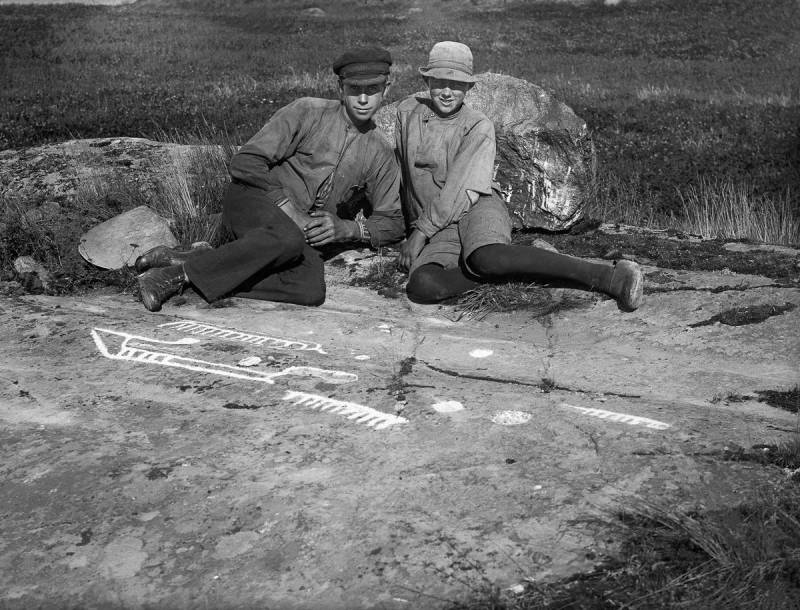
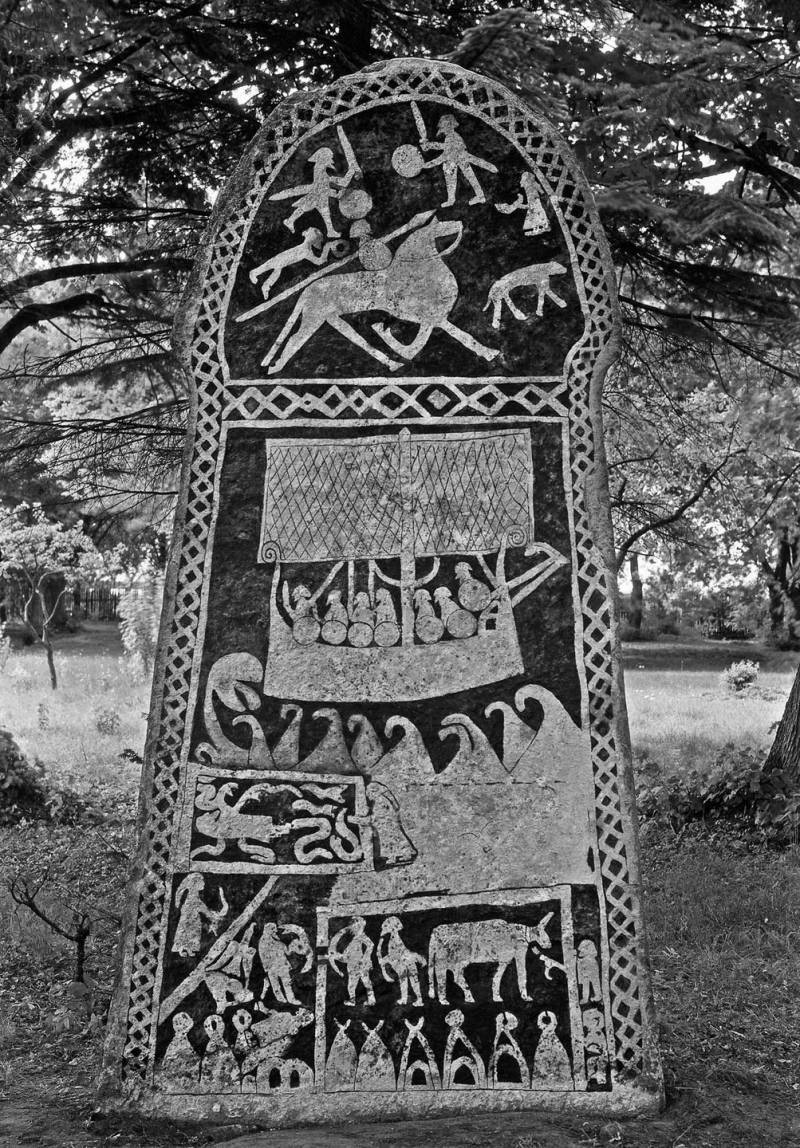
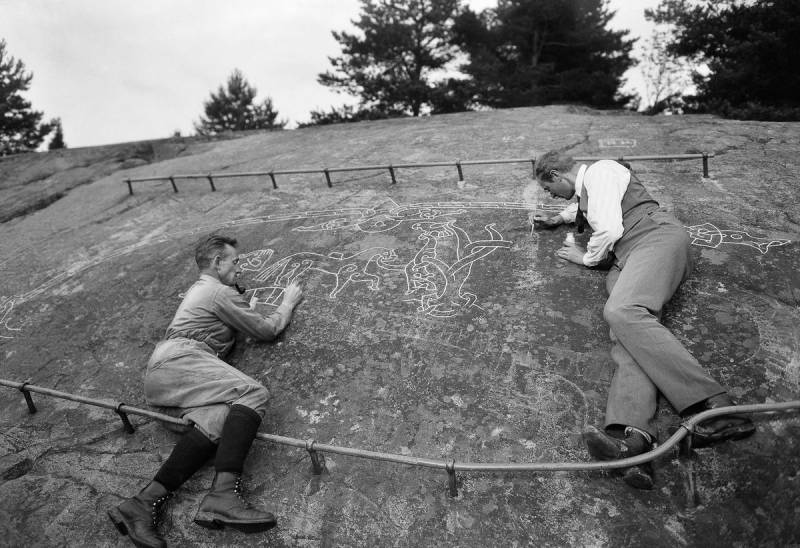
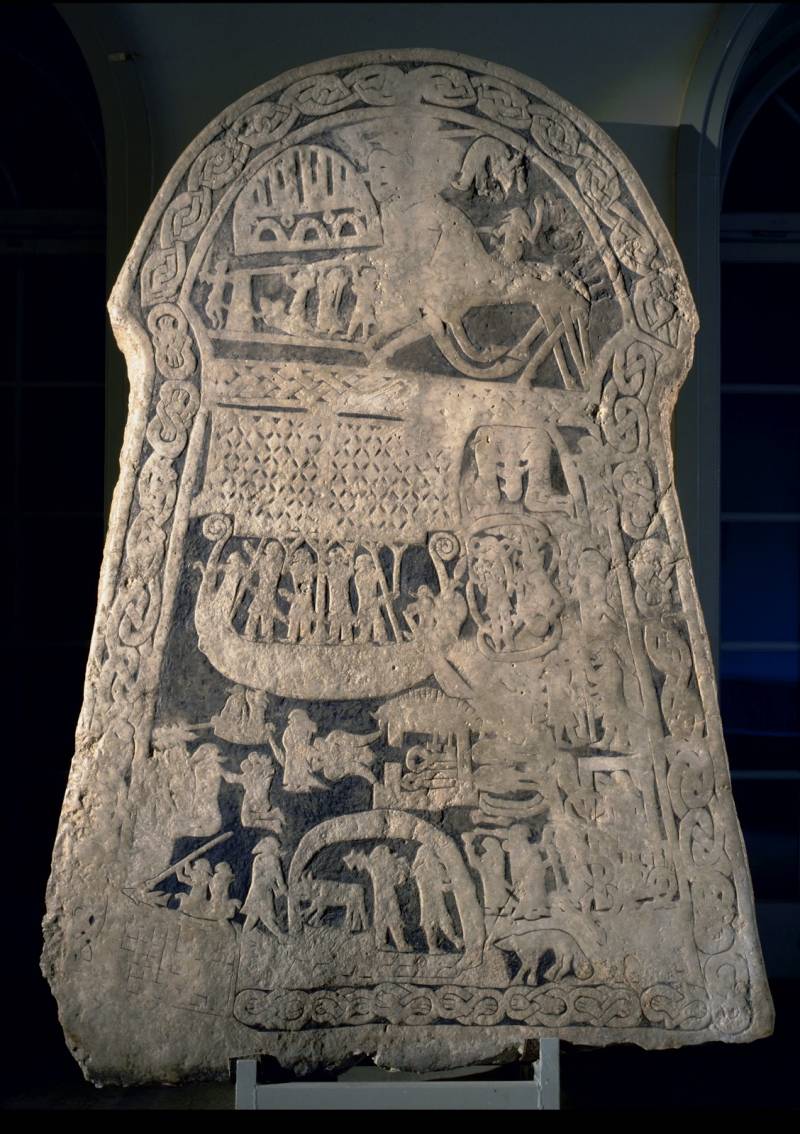
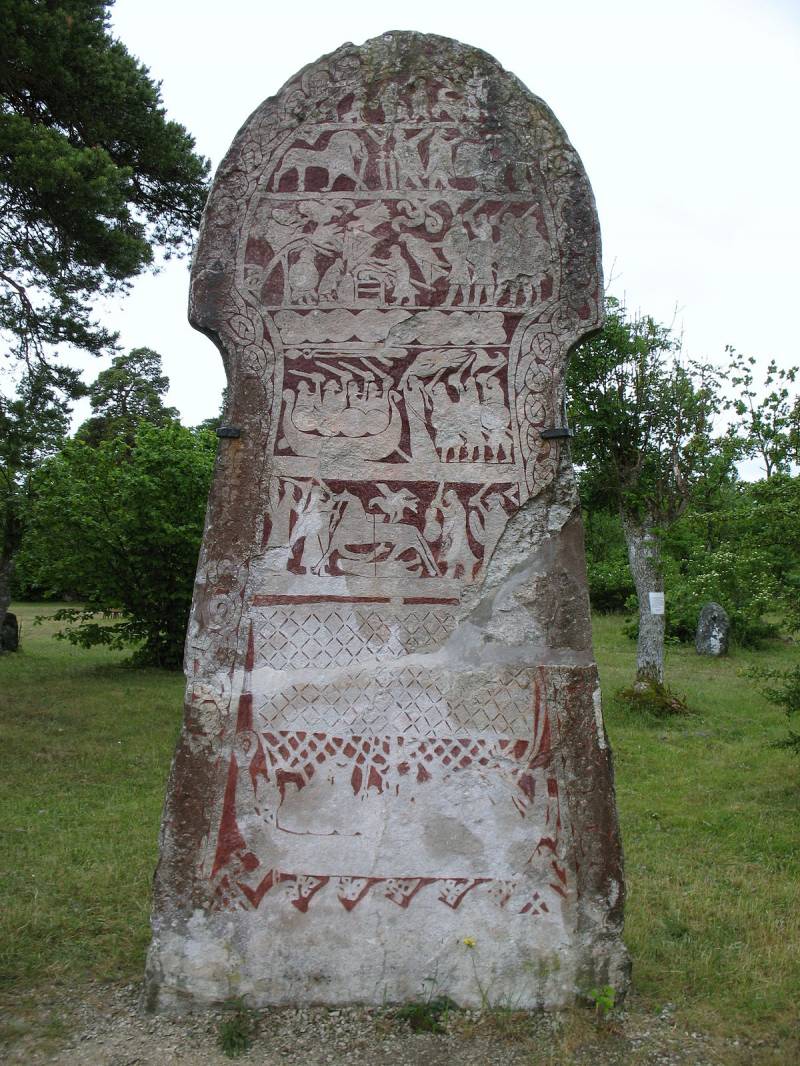
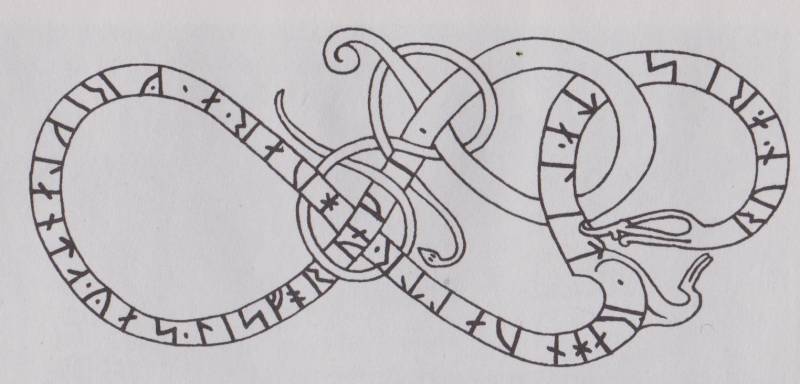
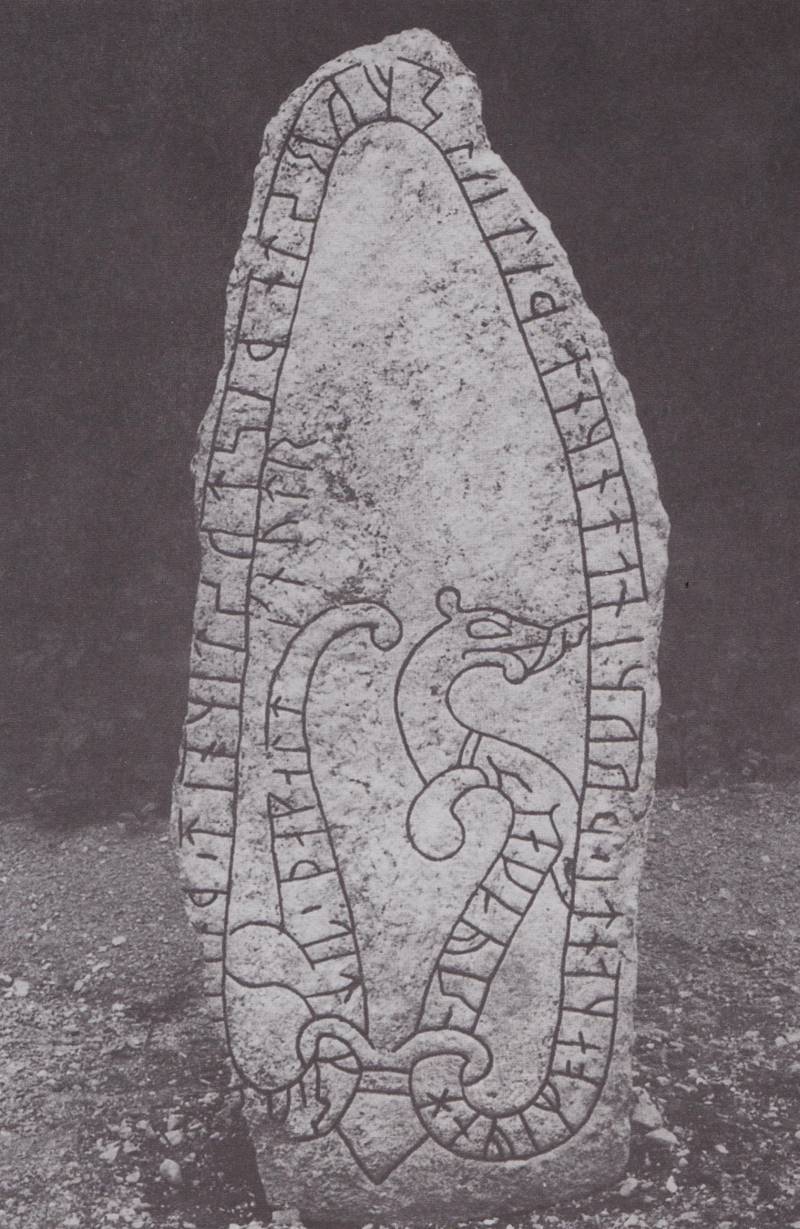
Information